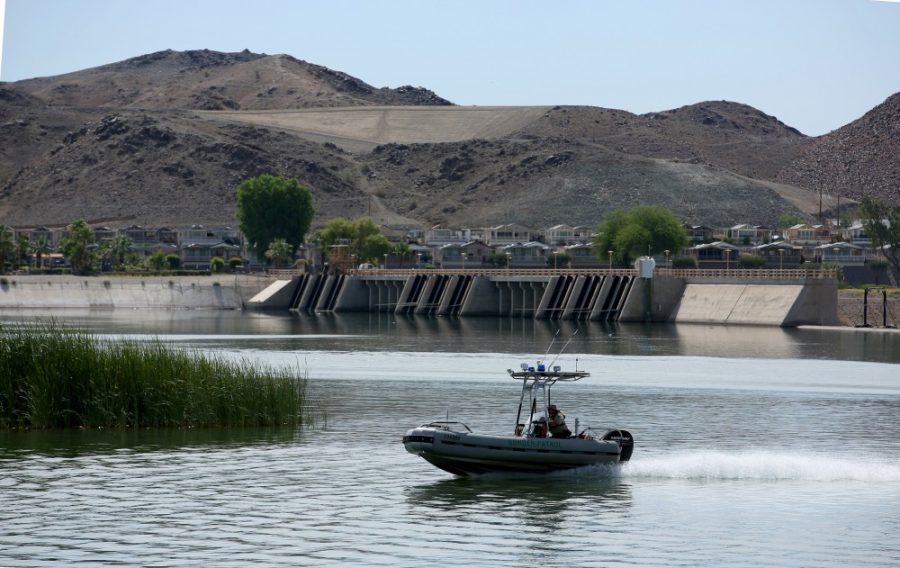The International Boundary and Water Commission reported on the beneficial impacts of an engineered flood of the Colorado River delta in 2014. Scientists from the UA, as well as from the Nature Conservancy and the Sonoran Institute, contributed to the report.
The 2014 “pulse flow,” or the temporary release of a surge of water from the Morelos Dam at the U.S.-Mexico border into the Colorado River, was a bi-national effort. Water from the U.S. side of the Colorado River flowed to the Mexican side of the river, according to Karl Flessa, professor of geosciences and the co-chief scientist of the Minute 319 monitoring team.
Around 130 million cubic meters of water was released during an eight-week period in the spring of 2014 during the pulse flow, according to the IBWC report. This is less than 1 percent of the river’s annual flow, according to Karen Schlatter, the adaptive management specialist for the Sonoran Institute.
Minute 319 is an agreement that was added to the U.S.-Mexico Water Treaty of 1944, and this treaty allows Mexico to store part of its water allocation in Nevada’s Lake Mead and for the U.S. and Mexico to share in future water shortages and surpluses on the Colorado River, Flessa said. This agreement also allows for the pulse flow.
One goal of the 2014 pulse flow was to see whether the release of water would help native vegetation and wildlife in the area, Flessa said. This goal may have been accomplished; where conservation groups had prepared the ground before the pulse flow, there was an “excellent recruitment of young native riparian plants,” according to Dale Turner, a conservation planner at the Nature Conservancy. This restoration of vegetation can provide habitat for different birds and other wildlife, Turner said.
Groups like the Sonoran Institute removed non-native vegetation species before the flow was released, and after the flow came and “inundated” the area, seeds from plants such as cottonwood and willow germinated in restoration sites, according to Schlatter. Other areas that hadn’t had non-native species removed didn’t have as much “establishment” because there wasn’t as much bare ground for the riparian (river bank) tree species to be established, Schlatter said.
Soil salinity also decreased because prior to the greater current of the pulse flow salt could build up, Schlatter said. The abundance of diversity in birds in the area also increased in restoration sites.
Since the release, a team of scientists from various institutions, including the UA, the U.S. Geological Survey, the Sonoran Institute, the Nature Conservancy and Mexican conservation organization Pronatura Noroeste, have been monitoring the environment around it.
“We learned a lot about what happens when that amount of water is released into the river,” Flessa said.
To do this, the team annually surveyed the vegetation and twice-annually surveyed bird abundance and diversity. They also measured groundwater levels in 72 shallow wells, and each month using satellite images, they measured the health and abundance of vegetation, according to Flessa.
“Two years is enough time to see what the immediate impacts were on the ecosystem,” said Edward Glenn, a professor emeritus in the department of soil, water and environmental science who was on the monitoring team.
The pulse flow itself and its subsequent monitoring involved cooperation between the U.S. and Mexico, something Glenn calls “probably the most positive thing” to come from the project. For the project to come together, the teams from both countries had a series of meetings, with some in the U.S. and some in Mexico, over several months, Glenn said.
The formation of that “really strong bi-national science team” may lead to more cooperation between the two countries with projects like this, according to Glenn.
According to Flessa, the agreement between the U.S. and Mexico that made this pulse flow possible runs out in 2017, and there are currently discussions about renewing the agreement.
Turner said releasing another pulse flow would “clearly be beneficial” because the environment adapts to a cycle of regular flooding.
“It’s an exciting project to restore some natural conditions in a system that depends on cooperation across an international border,” Turner said. “That’s a very rare thing in this world.”
If another pulse flow were to happen, Schlatter said the team would probably target key restoration sites and possibly sites further upstream as well, depending on input from the science team and government agencies.
Flessa said he is optimistic about the possibility of the agreement being renewed.
“I think everybody’s optimistic because everybody benefits,” Flessa said. “The U.S. and Mexico benefit. Nature benefits too.”
Follow Ava Garcia on Twitter.









